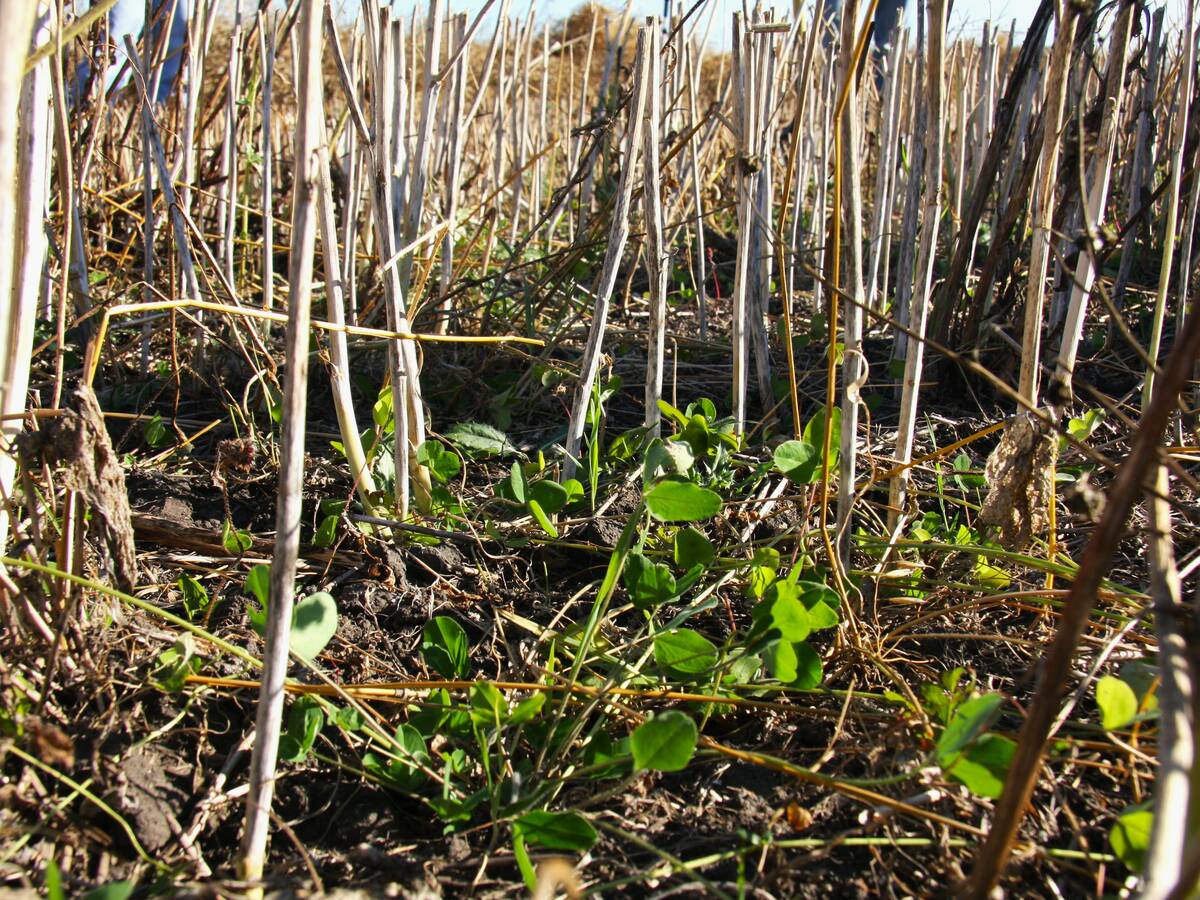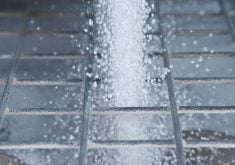There has been a lot of discussion about the saline patches that have popped up in fields over the last few years.
Questions include, “where did they come from?” and “what can I put on the patches to get rid of them?”
With this being the international year of soil, I thought it was a good time to discuss the issue.
We tend to use the terms alkali and saline interchangeably in Western Canada, which has caused confusion.
We are mainly dealing with saline soils and salinity, which is largely caused by excess salt in soil limiting the availability of water to plants.
Read Also

Saskatchewan project sees intercrop, cover crop benefit
An Indigenous-led Living Lab has been researching regenerative techniques is encouraging producers to consider incorporating intercrops and cover crops with their rotations.
Soluble salts increase electrical conductivity in the soil, which is ex-pressed as dS/m, mS/cm, or mmho/cm. All three measures are equal, and there are generally five classes of salinity:
- non-saline (0-2 dS/m)
- slightly saline (2-4 dS/m)
- weakly saline (4-8 dS/m)
- moderately saline (8-15 dS/m)
- strongly saline (more than 15 dS/m)
Crops vary widely in their ability to withstand salinity.
Alkali soil is also defined as having a high exchangeable sodium content: 15 percent or more. There are few true alkali soils in Western Canada.
It isn’t surprising that saline soil is occurring throughout much of Western Canada.
Salinity results from the movement of dissolved salts in groundwater. As the water moves up in the soil profile and evaporates, it leaves the salt behind.
We have had a lot of water to move these salts over the last few years.
We have also had excess water in many fields, which has resulted in poor growth. With little growth, there is nothing to use the water, so more is available to evaporate.
Agrologist and researcher Les Henry, a leading authority on salinity, feels it is more of a water issue than a salt issue.
The water is moving the salt into the top layers of the soil, where it affects plant growth.
A number of situations create salinity, including artesian discharges, evaporitic rings around sloughs and side hill seeps. The long-term solution to all three situations is controlling water movement.
Artesian discharges are difficult for an individual farmer to change because they are a result of a large amount of water collecting over a wide recharge area and then moved over a large distance. It requires a regional plan to mitigate these issues, if they are able to be controlled at all.
Side hill seeps are similar to artesian discharges, but on a much smaller scale.
The management of side hill seeps starts with the discovery of the source of the water. This is referred to as the recharge area.
Excess water can be managed in the recharge area through draining or cropping decisions, such as eliminating fallow and ensuring a crop is growing every year. Planting perennial forages such as alfalfa and grasses is another strategy.
Evaporation rings around sloughs or depressions are the most common salinity issue in a wide area of the Prairies. Moisture from the slough migrates out and evaporates, leaving a saline ring.
Managing water is again the solution. Draining water from these depressions will remove the source of the problem.
Managing salinity that already exists is a long-term endeavor. Growing a crop on these areas is critical because drawing out excess moisture will allow rainfall to move salt back down through the soil profile.
Many crops do not grow in soil with high salinity levels. The most tolerant annual crops include canola, flax, mustard, wheat, fall rye, oats, barley, safflower, sunflower and sugar beets. Barley is the most tolerant to salinity.
Perennial crops such as wild rye grasses and slender wheat grasses can be successful in soil with a high salinity level.
New, saline tolerant hybrid wheatgrasses such as AC Saltlander and NewHy were developed by crossing quackgrass (elytrigia repens or agropyron repens) with bluebunch wheatgrass (pseudoroegneria spicata oragropyron spicatum). These hybrids have shown good tolerance to salinity while also producing good quality forage.
Products are often marketed as cures for salinity, and I admit that the concept of spraying something on a salinity patch or sprinkling a product on the ground and working it in to cure salinity is enticing. There are also amendments that can reduce the problems associated with alkali soils, and these are often marketed as cures for salinity.
Sadly there are no magic sprays or powders or granules that will cure salinity. Keep your money in your pocket or invest it in drainage.
For further reference, get a copy of Henry’s Handbook of Soil and Water. It is a must-have for every farmer in Western Canada. Provincial resources about managing salinity are also available online in Saskatchewan.
Salt tolerant weeds, such as kochia and foxtail barley, draw attention to saline soil. Try to figure out where that water is coming from. If you control the water, you will stop the spread and get the payback of more top quality land to farm tomorrow.
If you have a product that will cure salinity, have the scientific data that shows this and can show evidence of this in the field, I will review the information and, if it works, highlight it in a future column.














